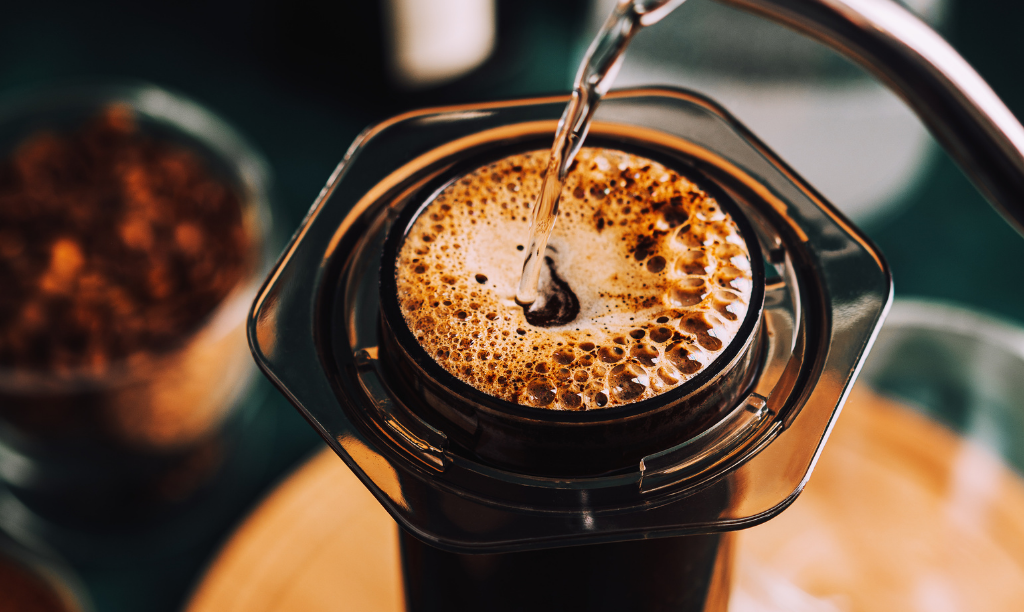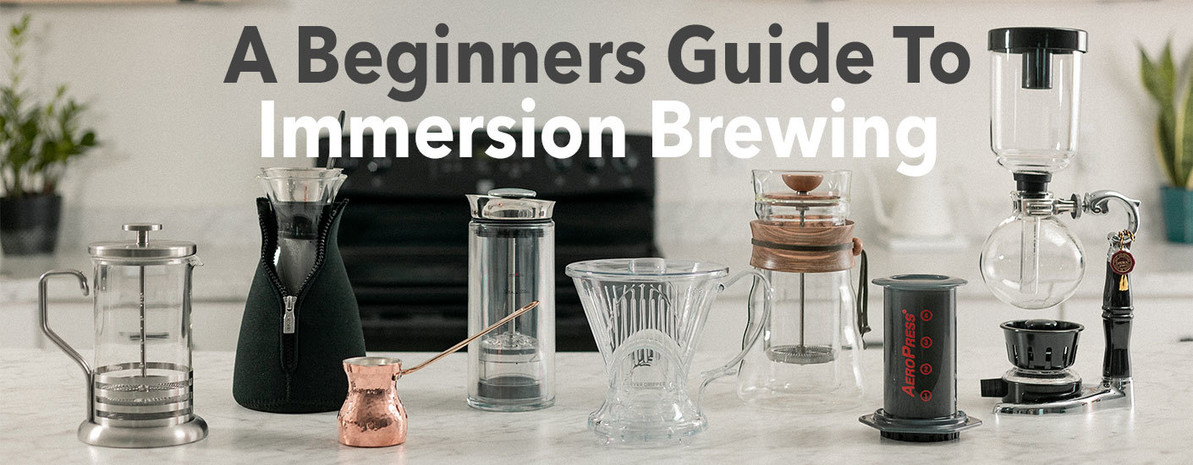The Ultimate Contrast of Popular Coffee Brewing Methods for Home Baristas
The Ultimate Contrast of Popular Coffee Brewing Methods for Home Baristas
Blog Article
The Scientific Research Behind Coffee Developing: Just How Temperature Level and Time Affect Your Drink
Recognizing the scientific research behind coffee brewing exposes that temperature level and time are not mere variables yet crucial elements that dictate the beverage's flavor profile and general high quality. The optimum brewing temperature level normally drops in between 195 ° F and 205 ° F, while the duration of extraction varies significantly throughout various methods. This interaction of variables can lead to a cup that is either frustrating or delightful. As we explore the subtleties of these aspects, the concern arises: how can one effectively equilibrium temperature and time to attain that best brew?
The Chemistry of Coffee Extraction
The chemistry of coffee extraction delves right into the intricate procedures that change raw coffee beans into the fragrant drink delighted in worldwide. This transformation largely includes the solubility of various compounds present in the beans, which are influenced by aspects such as grind dimension, water top quality, and the brewing approach utilized.
During the brewing process, warm water functions as a solvent, removing soluble substances, including high levels of caffeine, lipids, sugars, and acids, from the coffee grounds. Each substance adds to the taste profile, fragrance, and body of the last beverage. Acids are responsible for bright and appetizing notes, while oils contribute to an abundant mouthfeel.
The preliminary phases of developing remove acids and sugars, leading to a pleasant level of acidity, while extended removal can lead to bitterness due to over-extraction of unfavorable compounds. Comprehending these chemical communications is important for enhancing brewing methods, as the balance in between removal time and water temperature level can dramatically affect the general quality of the coffee.
Suitable Developing Temperatures
Locating the appropriate developing temperature is essential for unlocking the full capacity of coffee tastes and aromas - coffee brewing methods. Research study shows that the optimum variety for developing coffee exists between 195 ° F to 205 ° F(90 ° C to 96 ° C) Within this range, the extraction process effectively dissolves the desirable soluble substances in coffee beans, causing a well balanced and savory mug
Brewing at reduced temperatures, such as below 195 ° F(90 ° C ), might result in under-extraction, yielding a weak and acidic mixture with low-key tastes. On the other hand, developing at temperatures exceeding 205 ° F(96 ° C) can bring about over-extraction, creating a bitter and harsh taste due to the excessive dissolution of unwanted compounds, such as tannins.
In addition, the ideal brewing temperature level can differ depending on the coffee bean type and roast degree. Lighter roasts commonly profit from slightly higher temperatures to enhance their complex flavor profiles, while darker roasts might be better fit to reduced temperature levels to alleviate bitterness.
Ultimately, keeping accuracy in brewing temperature levels is vital for achieving a harmonious balance of tastes, guaranteeing that every cup of coffee supplies a rewarding sensory experience.
Impact of Brewing Time
Developing time plays a pivotal role in establishing the flavor profile and total top quality of coffee. The removal process, which influences the taste, fragrance, and body of the drink, is largely reliant on how much time the coffee premises are in call with water. Much shorter developing times can lead to under-extraction, resulting in a sour or weak taste, as inadequate soluble compounds are liquified. Alternatively, extended developing can bring about over-extraction, where undesirable substances are released, leading to an astringent or bitter preference.
Optimal brewing time varies depending upon the technique made use of and the grind dimension of the coffee. For example, a French press commonly calls for regarding 4 mins, while coffee extraction is normally finished within 25 to 30 secs. It is important to adjust developing time in conjunction with various other variables, such as water temperature level and coffee-to-water ratio, to attain the preferred flavor account.
Understanding the influence of developing time allows coffee lovers to fine-tune their brewing methods, eventually enhancing the sensory experience of their mug (coffee brewing methods). With mindful interest to this variable, one can unlock the complete potential of the coffee, disclosing its distinct features and nuances
Developing Techniques and Their Results

For circumstances, techniques like French press and cold brew permit a longer steeping time, leading to a fuller body and durable taste because of enhanced extraction of oils and soluble solids. Conversely, espresso brewing utilizes high stress and a much shorter extraction time, producing a concentrated shot that highlights intense flavors and a rich crema.
Pour-over techniques, such as Chemex or V60, provide a more regulated removal process, allowing the maker to control flow rate my latest blog post and water circulation, which can enhance brightness and clearness. Percolation techniques cycle water with the coffee grounds several times, leading to a more powerful, typically bitter taste.
Finally, the use of paper filters versus steel filters can additionally affect the last preference; paper filters commonly generate a cleaner cup by trapping oils and great fragments, while steel filters allow more oils to travel through, adding to a fuller mouthfeel - coffee brewing methods. Recognizing these nuances can raise the coffee experience dramatically
Tips for Perfecting Your Brew
A well-executed mixture can change even the easiest coffee right into an impressive experience. Grind the beans just prior to making to optimize quality, making sure the work size matches your brewing technique-- coarser for French press and finer for espresso.
Water top quality plays an important function; usage filteringed system water without contaminations. The suitable developing temperature webpage ranges between 195 ° F and 205 ° F(90 ° C to 96 ° C ) Too hot can blister the coffee, while also trendy may under-extract flavors.
Timing is just as crucial. For immersion methods, soaking for 3 to five minutes is ideal, whereas drip methods typically take around five minutes. Try out brew times to locate your recommended stamina.

Conclusion
In recap, the complex relationship in between temperature and time is paramount in the coffee brewing procedure. Following optimum brewing temperatures between 195 ° F and 205 ° F, together with precise timing tailored per approach, ensures the preferred flavor account is accomplished. Recognizing these scientific concepts encourages people to fine-tune their brewing techniques, eventually causing an extra well balanced and delightful coffee experience. Mastery of these variables is necessary for any coffee enthusiast looking for excellence in their drink.
Recognizing the scientific research behind coffee developing reveals that temperature level and time are not plain variables yet crucial components that dictate the drink's flavor account and total high quality. Understanding these chemical interactions is vital for enhancing developing methods, as the equilibrium between extraction time and water temperature can significantly influence the overall top quality of the coffee.Brewing time plays a pivotal function in determining the taste profile and total quality of coffee. By focusing on these components-- check this bean top quality, grind size, water temperature, steeping time, and proportion-- you can raise your coffee developing process, resulting in a constantly premium mug.
In summary, the detailed partnership in between temperature and time is vital in the coffee brewing procedure.
Report this page